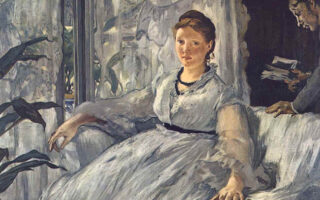Le Quartier Juif
- SUBSCRIBE
- ALREADY SUBSCRIBED?
BECOME A BONJOUR PARIS MEMBER
Gain full access to our collection of over 5,000 articles and bring the City of Light into your life. Just 60 USD per year.
Find out why you should become a member here.
Sign in
Fill in your credentials below.
The ancient Jewish Quarter in Paris has become the Jewish block, rather like many Chinatowns in America. Times change, which is a polite way of saying prices rise, but unlike rising tides rising prices raise only some boats and sink others. Perhaps that is as good definition of history as we’ll ever know.
Paris’s quartier juif has been in the Le Marais since the thirteenth century, changing shape, dimension, and atmosphere over the years, but always there, more then less then more now barely there at all. It was never an official ghetto in the Eastern European sense, with walls around it and gates that locked from the outside at night to prevent the Jews from doing whatever the miserable superstitions of the era believed they might do once the sun had gone down. France’s history of anti-Semitism is unlovely, but the Parisians did not build a defining wall that kept the Jews or their neighborhood from getting out and about. Perhaps they should have.
It’s not that good fences make good neighbors—even Robert Frost who gave us the line never believed it himself—and the thought has nothing to do with blood libels or any other version of anti-Semitism. Yet however unlikable a wall may be, it can sometimes slow down, if not derail, the freight train of history. I’ve seen this myself in Paris, on la Rue Victor Schoelcher in the Fourteenth Arrondissement. And an unlikely wall for Paris it is, being covered with ivy, but for good reason. The ivy was not planted on the outside of the wall, which I have never observed in Paris, but has grown over from the inside, and that makes sense since on the other side of the wall was the Cimetière du Montparnasse.
Among the many famous people buried in Montparnasse is Simone de Beauvoir in front of whose house, according to the marble plaque with gilt letters fastened to the wall, I was standing when I noticed the ivy wall. When she looked out her window every day, she could see her own future, perhaps, but I wonder how she felt about that. Not that I cared because I was on my way to say hello to M. Charles Pigeon, the inventor of a gas-lamp guaranteed not to blow up and the resident of a tomb topped by bronze likenesses of himself and Madame Pigeon in bed, she lying back, he up on his elbow, notebook in hand, ready to invent yet again something useful.
But he’s frozen in the creative moment—and nothing is going to happen, so I keep walking with an eye, now, on Simone de Beauvoir’s house which I was surprised to discover was visible up to the right from where I was standing. Might as well find out what she looked at below her window and there I was opposite her house, maybe 100 metres or a little more from the wall I had seen from the street, on Avenue Thierry, Divisions 29 and 30, according to the cemetery’s street signs—and apparently in le quartier juif according to all the Stars of David that began appearing on the vaults. At first, after the endless graves marked Dupont, Durand, Ducros, Dulac, Dumont, and Duval, it seemed that Léopold Cahn (and wife) and the collateral Bollack family next door might simply have moved into the neighborhood because space was available But the parade formed by les familles Wolf, Klein, Zelazko, Lazare, Oppenheimer, and Lévy, not to mention Muthi de Mazeltoub Benhanou née Smadja (1900-2001), suggested something else: a neighborhood where Jews could feel at home and be in peace, presumably forever.
I headed toward the wall, thinking maybe several Jewish families had simply by chance wound up along the main path in this rather large corner on the eastern edge of the cemetery. But between Avenue Thierry and the wall were more Stars of David perched on Samuel, Perez, Loeb, and Haloua. No happenstance, no hasard: this is where the Jews bury their dead, perhaps were allowed to bury their dead. They were only let into Père Lachaise on the Right Bank after the Revolution, so why not here too in Montparnasse on the Left? No matter, this is where the Jews are welcome to bury their dead and welcome one another in life. The mausoleum of the Khan family provides the image. It has a stone door, visually propped open by a painted cast-iron floral arrangement and pot, but look closer: the door could not move anyway. It has no hinges. It was built ajar. We don’t close the door on you, it tells me.
And they don’t because among all the graves with Stars and Jewish names I find Daniel Petit. Could he have been né Klein and changed his name? But there’s a cross on his new grave: did he convert, yet by some weird irony or snafu wind up the Jewish Quarter? Probably not, because a little further on there is the very old vault of the Deshayes family, also with an open door, revealing a Virgin and Child, but this door is hinged and moves, though there are spider webs across the opening.
A few more crosses, a few graves impossible to identify, but will this quartier juif give way to those seeking desirable—that is to say, remaining—real estate who are not Jewish? Le Cimetière du Montparnasse is filling up. The gravestone makers with their stores opposite the cemetery on Boulevard Edgar Quinet have here and there put up “temporary” vaults, metal advertising signs, in fact, that look as if they have been there forever, holding a place for someone, for the marbrier funéraire himself or his heirs to sell off at a profit some day. It’s possible: they must be valuable, these temporary sites. No one wants to be buried in the suburbs, and eternity with Simone de Beauvoir, Bartholdi, Brancusi, Beckett, Baudelaire, and Bourdelle would be much chummier and intellectually improving. It’s a great neighborhood, a desirable quartier.
And so, what about its future—altered beyond recognition by high prices and gentrification? Cities of the dead always reflect the cities of the living, and there are new Chinese and Vietnamese graves not far from where I have been visiting. Will the neighborhood of the Keims and the Solomons vanish as did the kosher butcher with the advance of the artisanal ice-cream parlor? Surely not, I think, and cross my fingers. The French don’t like to move graves any more than anyone else. And besides, le quartier juif funéraire, unlike the living one in Le Marais, is protected on two sides by walls that send ivy out onto the streets of Paris.
© Joseph Lestrange


